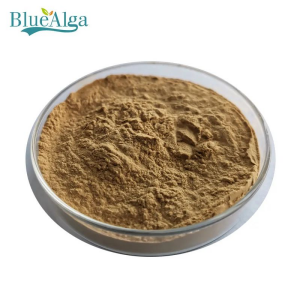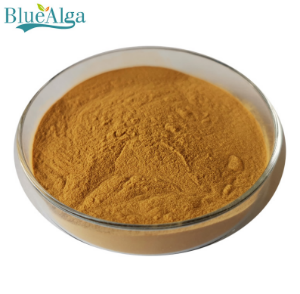Alginate oligosaccharide & Chitosan oligosaccharide
What is the difference between alginate oligosaccharide and chitosan oligosaccharide? This article takes you to understand clearly!
Oligosaccharides, also known as oligosaccharides, are straight-chained or branching-chained sugar compounds formed by linking 2 to 10 identical or different monosaccharide units through glycosidic bonds.
Oligosaccharides have received increasing scientific attention due to their many unique biological functions, especially the role of marine-derived oligosaccharides on plants
Oligosaccharides have shown great promise in agricultural applications, including their effects on plant growth, disease resistance and inhibition of plant pathogenic microorganisms.
Agricultural grade - Alginate oligosaccharide

I. Product Introduction
Alginate oligosaccharide is an oligosaccharide derived from brown algae, the main component is a linear low polymer composed of B-D-polymannuronic acid (M) and a-L-polyguluronic acid (G), it is a small molecule state of alginate (fucoidan), light yellowish-brown powder, completely water-soluble, and no viscosity after dissolution.
Ⅱ. The product function mechanism
1. Three stages of Alginate oligosaccharide-induced adventitious root growth:
Early signal transduction stage: the environmental signal (Alginate oligosaccharide) is sensed by the "converter cell", which prompts the up-regulation of the expression of nitrate reductase gene and then induces the rapid accumulation of NO signaling molecules; growth hormone accumulation stage: the growth hormone in the plant body accumulates rapidly and reaches the peak value in 14-15 hours under the regulation of NO signaling molecules, which is about the normal level. The growth hormone accumulation stage: under the regulation of NO signaling molecules, the growth hormone accumulates rapidly in the plant and reaches the peak value in 14-15 hours, which is about 8-10 times of the normal level (relative to the treatment with water); adventitious root growth stage: the regeneration potential cells form adventitious roots under the guidance of growth hormones (IAA, indole acetic acid).
2.Induction and promotion of growth
The application of alginate oligosaccharide can induce the secretion of indole acetic acid and other plant growth hormones in the plant to promote crop growth and rooting. Research results show that after using fucoidan, within 15 hours, plant endogenous hormones such as indoleacetic acid and gibberellin can reach 8-10 times of the normal level.
3.Induction of antiretroviral
Abscisic acid is a very important growth hormone in plant body, which plays an important role in coping with adversity stress. The application of alginate oligosaccharide can induce the secretion of abscisic acid and other plant growth hormones in plants. Research results show that alginate oligosaccharide can induce the accumulation of abscisic acid in plants, reaching 5-7 times of the normal level, and the effect of stress resistance is obvious.
Ⅲ. The amount of Alginate oligosaccharide to be added
1. Flushing: 75-150g per ha, and it can be increased appropriately in fruit tree area;
2. Leaf spraying: 0.3-0.5g/15kg water, Alginate oligosaccharide leaf spray concentration is too high will show ineffective or inhibitory effect;
3. Urea, compound fertilizer add 0.4-1kg/ton, sprinkling fertilizer add 1-2kg/ton, foliar fertilizer add 5-10kg/ton.
Agricultural grade - Chitosan oligosaccharide

I. Product Introduction
Chitosan oligosaccharide, light yellow powder, completely water-soluble, no viscosity after dissolution. Chitosan oligosaccharide, also called chitosan, oligochitosan, scientific name β-1,4-glucosamine polymer, is a kind of oligosaccharides with polymerization degree between 2-10, molecular weight ≤3000Da, water solubility, functional role, high biological activity, low molecular weight products obtained by the degradation of chitosan by special biological enzyme technology. Chitosan oligosaccharide is the only positively charged cationic alkaline amino-oligosaccharide in nature, it is animal cellulose, known as "the sixth element of life".
Judging index: Total sugar content and polymerization degree are the key indexes to evaluate the advantages of chitosan products. Numerous researches show that the activity of degree of polymerization (DP) 3-7 is much higher than DP1-2, and the large molecular sugar is the main reason for the poor water solubility and mixability of the products.
Ⅱ. The product function:
1.Promote growth
Indole acetic acid is a very important growth hormone in plants, closely related to root development. The use of chitosan oligosaccharide can induce the secretion of indoleacetic acid and other plant growth hormones in plants. Research results show that after the use of chitosan oligosaccharide, within 8 hours, plant endogenous hormones such as indoleacetic acid and gibberellin can reach the highest level.
2.Induction of disease resistance
Chitosan oligosaccharide can activate the innate immune system of plants, regulate the defense genes in plants, induce plants to secrete a large number of secondary metabolites and defense proteins, improve the plant's ability to resist diseases and prevent diseases from occurring, which is broad-spectrum, safe and efficient.
3.Inducing antiretroviral
Chitosan oligosaccharide can activate the innate immune system of plants, regulate the defense genes in plants, and improve the resistance to cold, drought, salinity and alkali.
Ⅲ. Add the dosage:
1. Flushing: dosage 225-375g per ha, fruit tree area can be increased appropriately;
2. Foliar spraying: 3-5g/15kg water.



 Mobile: 86-13012553585 15610518510
Mobile: 86-13012553585 15610518510 Phone (Fax):86-53283197178
Phone (Fax):86-53283197178 E-mail: admin@bluealga.com
E-mail: admin@bluealga.com Add:No.918 Lingang 8 Road Huangdao District,Qingdao China 266400
Add:No.918 Lingang 8 Road Huangdao District,Qingdao China 266400

